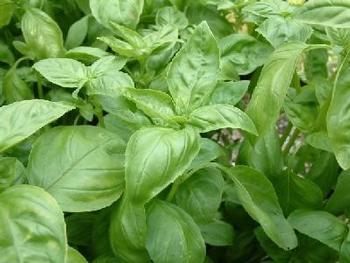Basil: the fragrance of summer
-
Basil is a kingpin of the kitchen garden, adding delicious perfume to summer afternoons (and many tasty dishes).

Many varieties of basil
While often considered an Italian herb, basil actually originated in Asia. There are many types of basil, ranging from large-leafed Mediterranean sweet basil to the globe-shaped tiny-leafed Greek, spicy Thai, citrusy lemon and lime, purple, and even chocolate. All these variations in aroma stem from slightly different levels of essential oils in the plant varieties. Here's how to select and grow different types of basil.
Cultivation and Care
Basil prefers well-drained soil and plenty of hot summer sun. Most types are sensitive to cold. A few perennial basils exist, but all types of culinary basil are annuals. It can be grown from seed indoors and then planted out in spring or early summer. It performs well indoors near sunny windows or outside on decks and patios. It is typically ready to be harvested in about ten weeks. Frequent harvesting of the outer leaves will prolong the life of the plant. Once basil flowers, leaf production slows, and essential oil production declines. Unless you are looking for seeds or a few blossoms for decoration, pinch off any flowers before they mature.Pest problems and solutions
Basil has a reputation as an insect repellent, particularly for mosquitoes, but there is little actual data to support this. Despite its insect-repellent reputation, basil is subject to a variety of pests, including whiteflies, slugs, aphids, spider mites, Japanese beetles, cutworms, and nematodes. Many adult insects can be thwarted by covering plants with fabric row covers during the day.
Whiteflies can be controlled with a strong stream of water to remove the flies. Or a natural insecticidal soap can be used. Slugs should be controlled with Sluggo. Cutworms can kill plants in the period after transplanting. To prevent infestation, add wood ashes to soil or place a cutworm collar around the base of the plant. Mealybug control is not simple: thwart the ants that carry the mealybugs on to the plants with diatomaceous earth, spray foliage with insecticidal soap; swab mealybug egg masses with alcohol.
By Sonoma County Master Gardener Steven Hightower
Edited for the Leaflet by Marie Narlock

